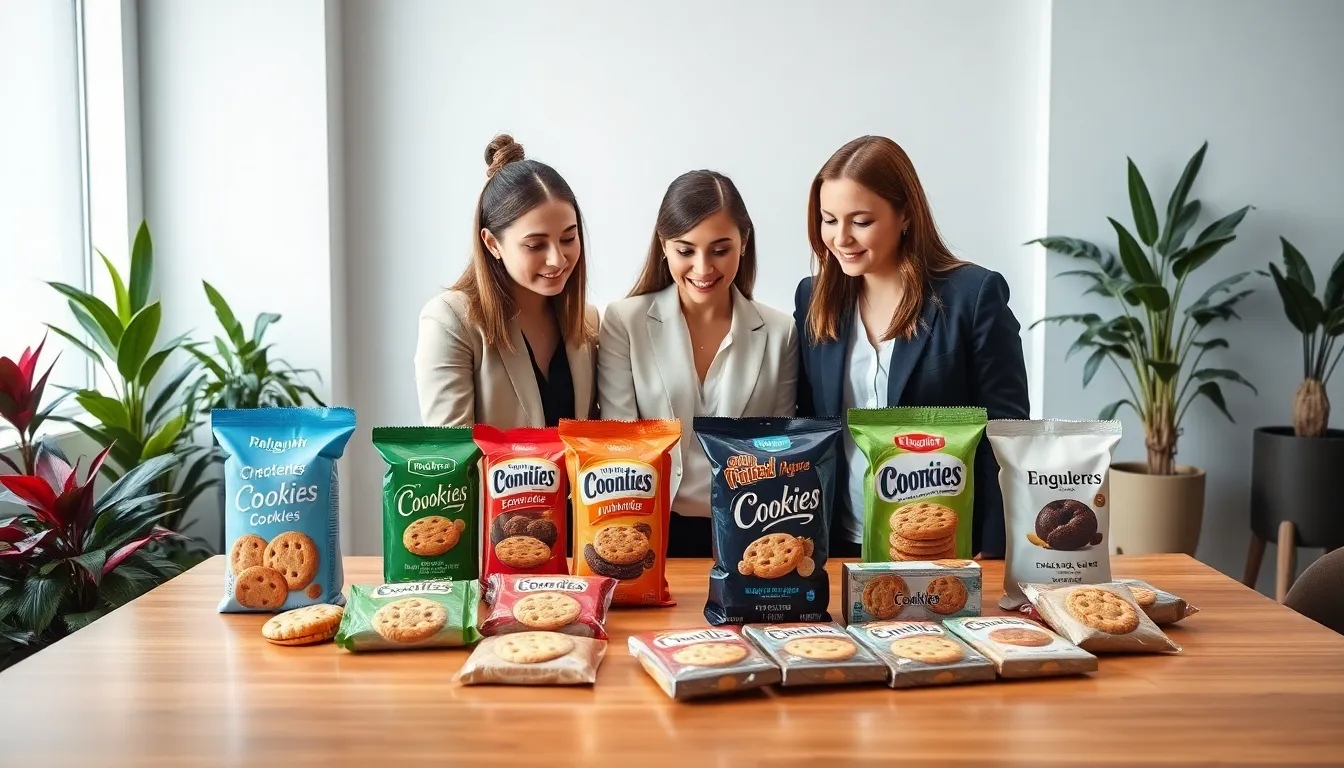Table of Contents
ToggleIn the deliciously competitive world of cookies, the phrase “you eat with your eyes” rings truer than ever. For a business like CookiesForLove, how the cookies are packaged can be just as important as the cookies themselves. A great package not only safeguards the scrumptious treats, but it also tells a story, your story. So, let’s jump into the colorful world of food packaging options that can elevate a cookie business from ordinary to extraordinary, all while keeping it fun and functional.
Importance of Packaging in the Cookie Industry

Packaging is akin to the first impression on a first date. It sets the stage for what customers can expect. In the cookie industry, where the competition is as sweet as the products themselves, effective packaging can mean the difference between ‘Wow.’ and ‘Meh.’ Great packaging attracts attention, enhances brand recognition, and encourages purchases. Also, it provides crucial protection for those delectable cookies, ensuring they reach customers in perfect condition. Good packaging conveys quality and care, stirring up trust among consumers, which is especially vital for a brand like CookiesForLove. In a market flooded with options, memorable packaging becomes a marketing tool in itself.
Types of Food Packaging Materials
Choosing the right food packaging materials is like picking the right ingredients for a cookie recipe. They all have to blend harmoniously. Here’s a look at some popular options for CookiesForLove:
1. Eco-Friendly Packaging Solutions
Consumers are increasingly favoring sustainability, making eco-friendly packaging an attractive choice. Materials such as compostable bags, recycled cardboard, and biodegradable containers are gaining popularity. Not only do these options reduce environmental impact, but they also resonate with eco-conscious consumers who appreciate brands committed to sustainability. Imagine CookiesForLove’s unique cookie flavors wrapped in chic, plant-based packaging. That’s a recipe for success.
2. Plastic Packaging Options
Plastic remains a common choice due to its durability and versatility. It allows for a wide range of formats, from resealable bags to rigid containers. But, the key here is to select BPA-free and food-safe plastics. While these packaging materials can effectively preserve freshness, the environmental implications cannot be ignored. Brands that use plastic should consider innovative ways to minimize waste, like offering recycling incentives to customers.
3. Paper and Cardboard Packaging
Paper and cardboard options are as classic as the chocolate chip cookie itself. They offer a rustic charm and can easily be customized with prints and designs that embody the brand’s personality. Cardboard boxes not only enhance the visual appeal but also provide better protection during shipping. Plus, they can be recycled, aligning with sustainability goals.
Customizing Your Cookie Packaging
Customizing packaging is the secret sauce to making CookiesForLove stand out. Here’s how to sprinkle a little more charm into that cookie box:
1. Design Considerations
The design should reflect the essence of the cookie business. Vibrant colors, playful fonts, and enticing visuals can create an emotional connection with potential buyers. Also, thoughtful design can enhance brand recall, making it easier for customers to remember where that delicious cookie came from.
2. Branding and Marketing Strategies
Incorporating branding elements into packaging is akin to putting your signature on a masterpiece. Every box, wrapper, or bag should communicate the brand’s story and values. Utilizing strategic branding can lead to increased customer loyalty as well. Whether it’s a charming logo or a catchy tagline, consistent branding helps customers feel connected to the product, turning casual consumers into repeat buyers.
3. Informative Labels and Compliance
The beauty of a well-packaged cookie should not overshadow its essential information. Labels must comply with food safety regulations, listing ingredients and nutritional facts clearly. Not only does this transparency build trust, but informative labels can also align with consumer expectations for health-awareness. Think fun illustrations on the packaging that highlight the ingredients used, engaging consumers while keeping them informed.








